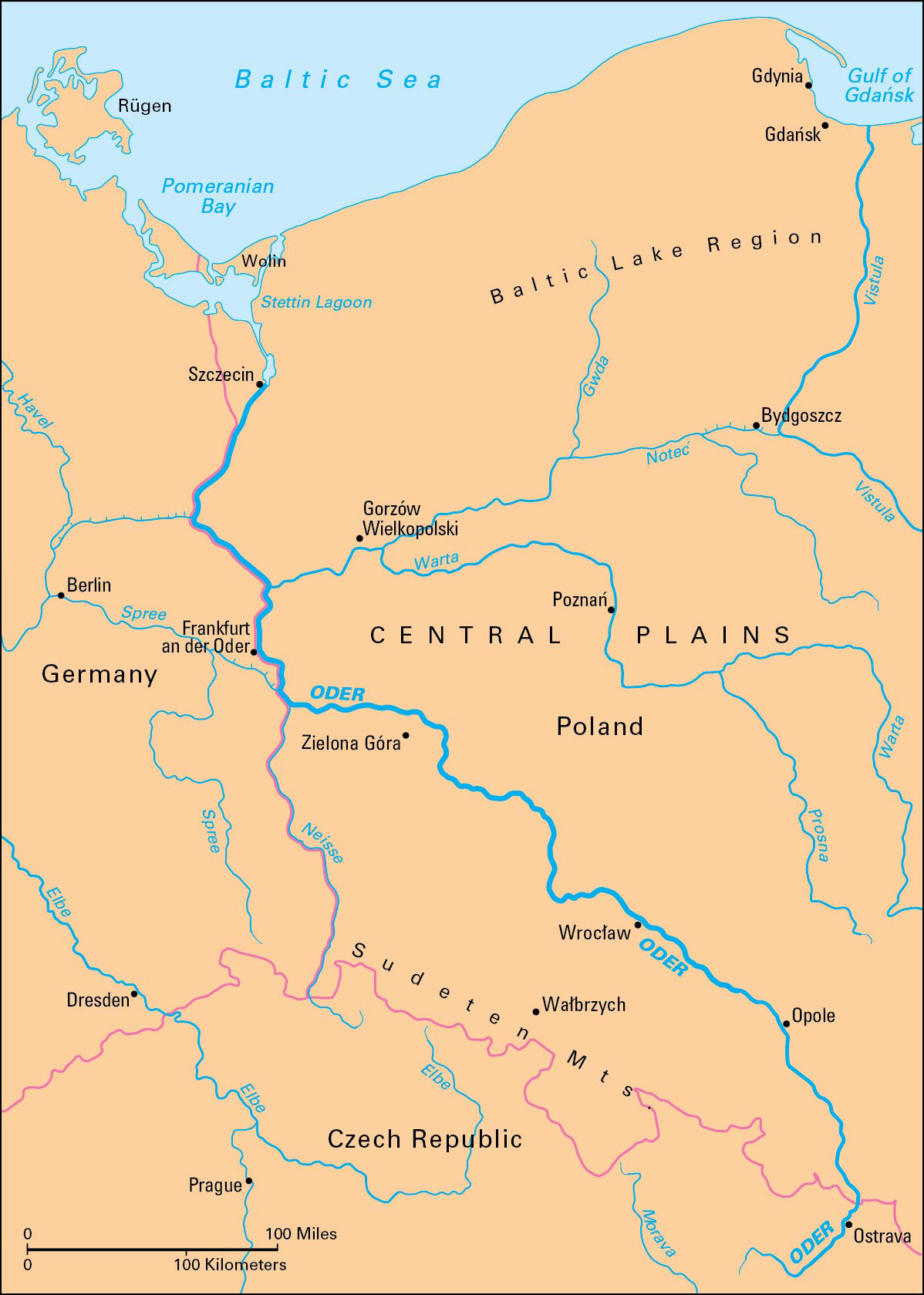Oder, << OH duhr, >> River is an important waterway in central Europe. It is about 530 miles (855 kilometers) long and drains about 46,000 square miles (119,000 square kilometers).
The Oder, also called Odra, rises in the Sudeten Mountains of the Czech Republic. It then flows northward across western Poland where it is joined by the Neisse (Nysa) River–officially Lausitzer Neisse (Nysa Luzycka). The joined rivers form most of the boundary between Poland and Germany. The Oder empties into the Baltic Sea by way of the Stettin Lagoon. Oceangoing vessels use the Polish port of Szczecin south of the lagoon. Other major cities on the Oder include Frankfurt in Germany, the Polish cities of Wroclaw and Opole, and Ostrava in the Czech Republic. 
The Oder’s tributaries include the Warta (Warthe) River. The Warta links the Oder with the Vistula River in Poland by the Notec (Netze) River and a canal. Canals also link the Oder with the Polish industrial city of Gliwice and with the Havel and Spree rivers in Germany.
The Oder-Neisse boundary between Poland and East Germany was established after World War II ended in 1945. East Germany recognized this boundary in 1950. West Germany opposed the boundary until 1970, when it signed treaties with both Poland and the Soviet Union confirming the boundary. East Germany and West Germany unified in 1990.
